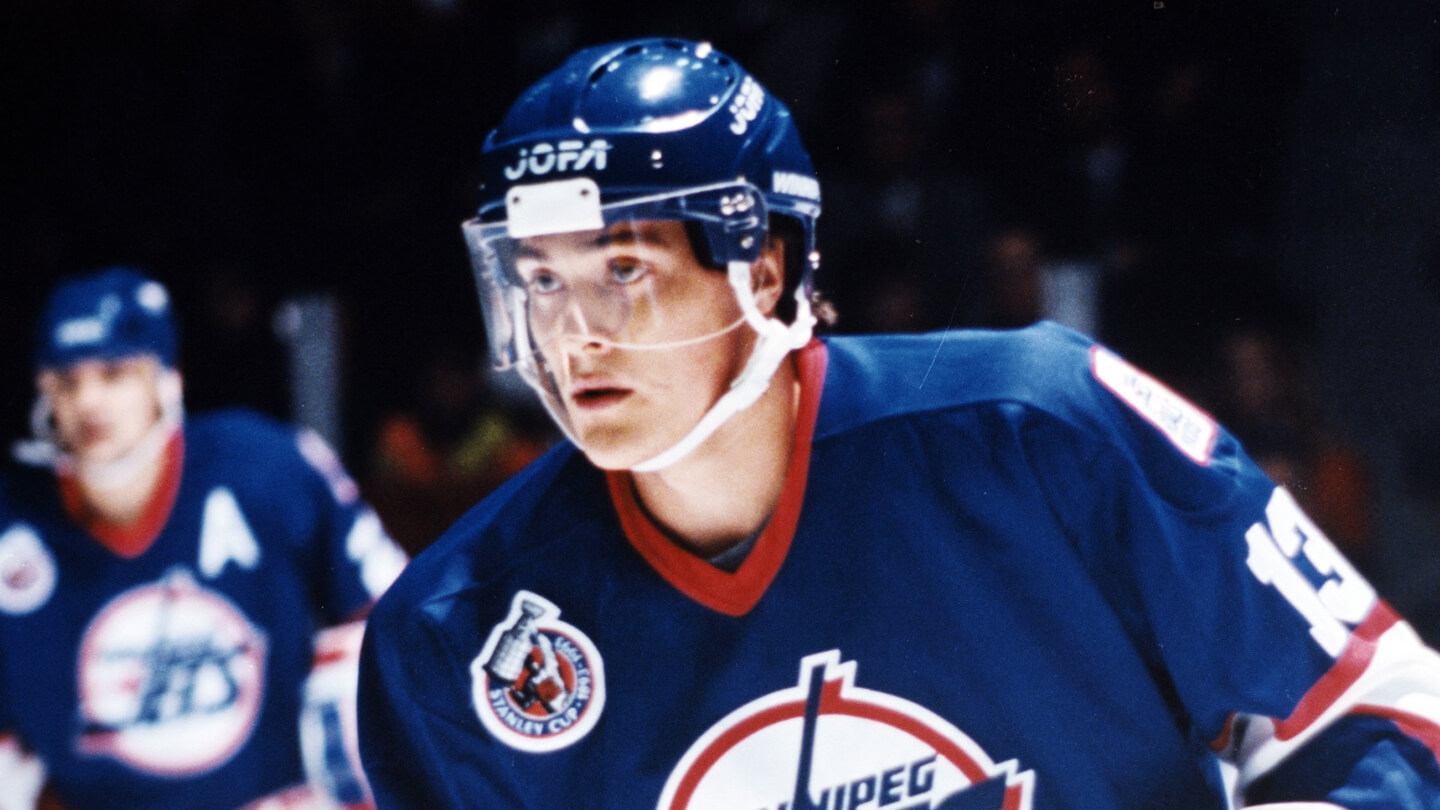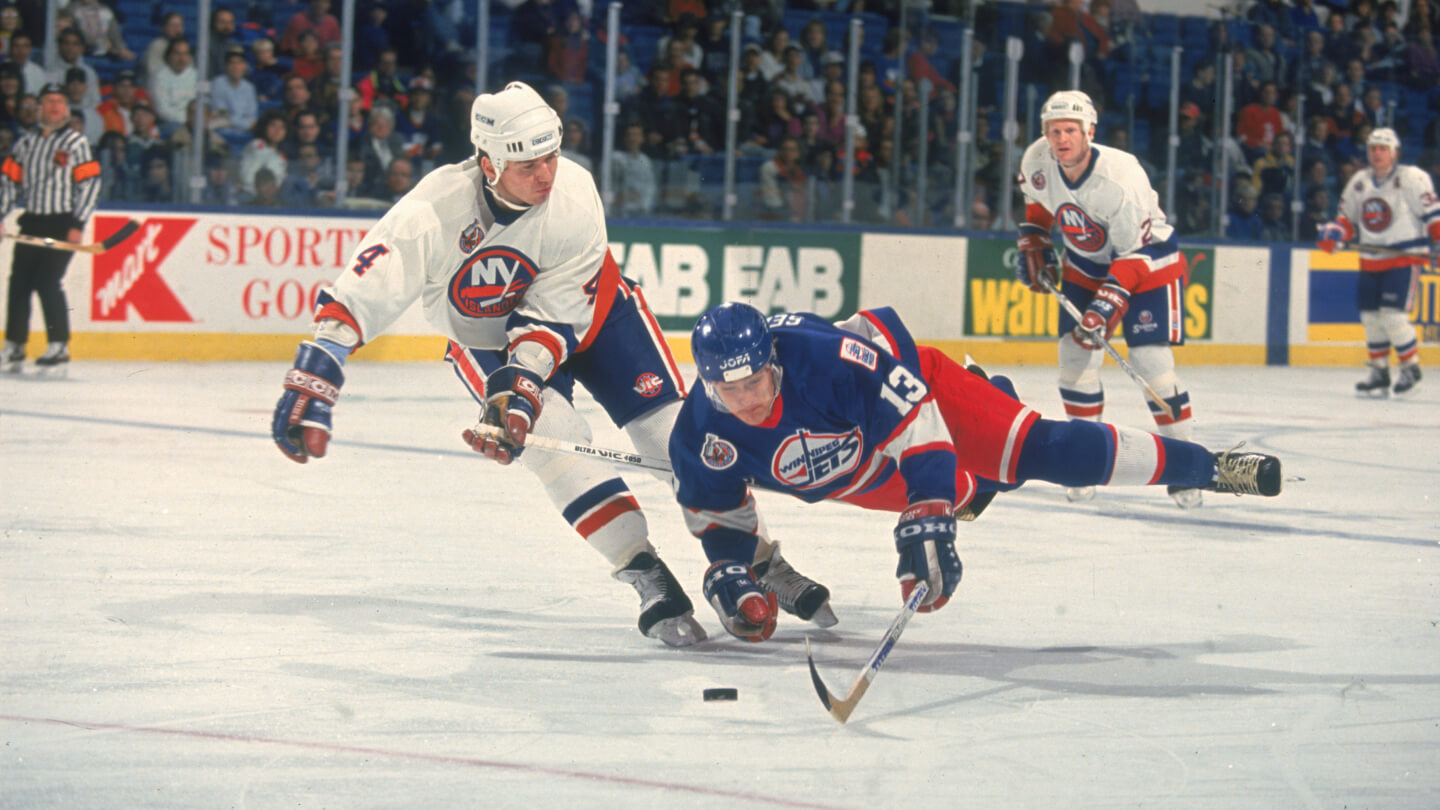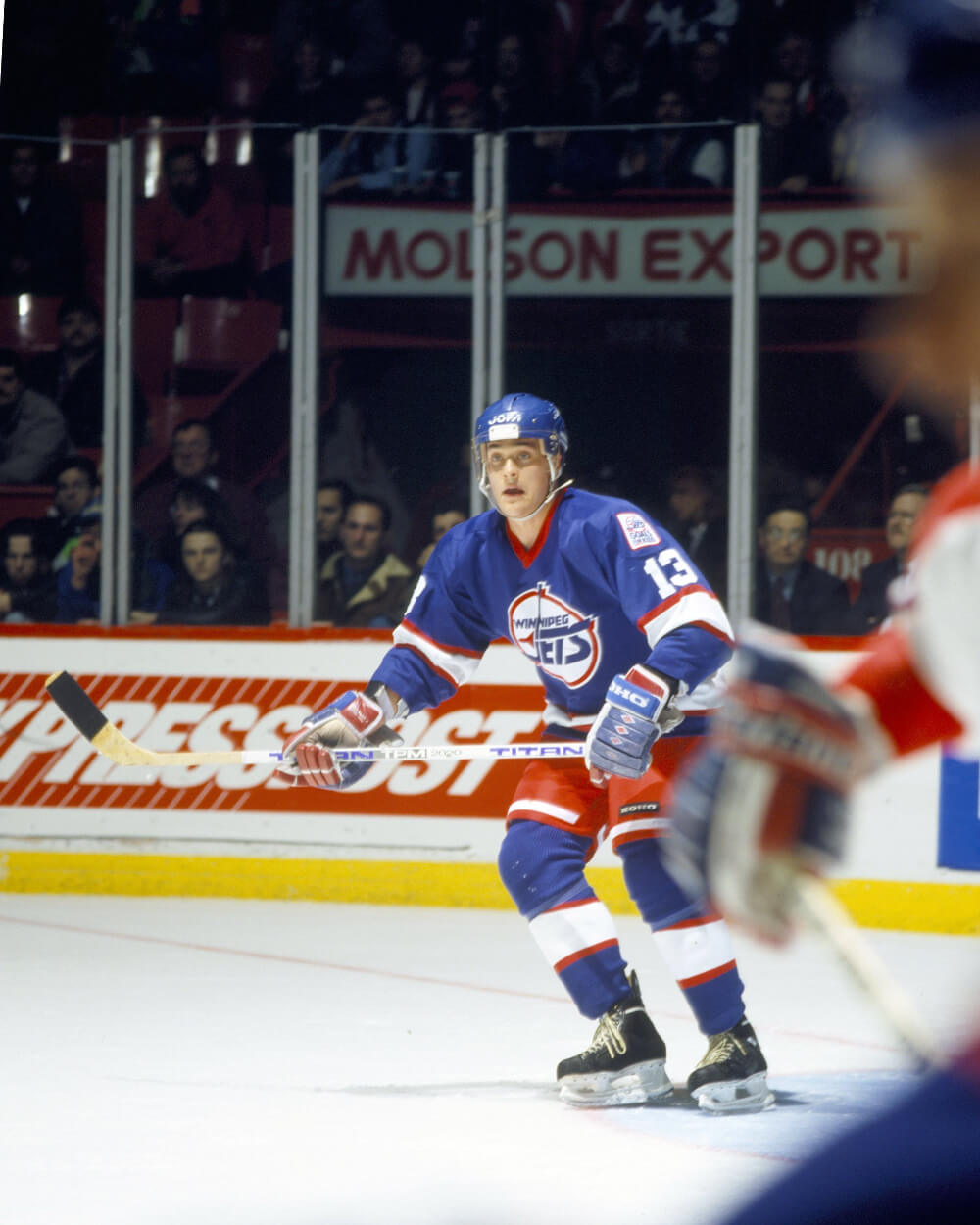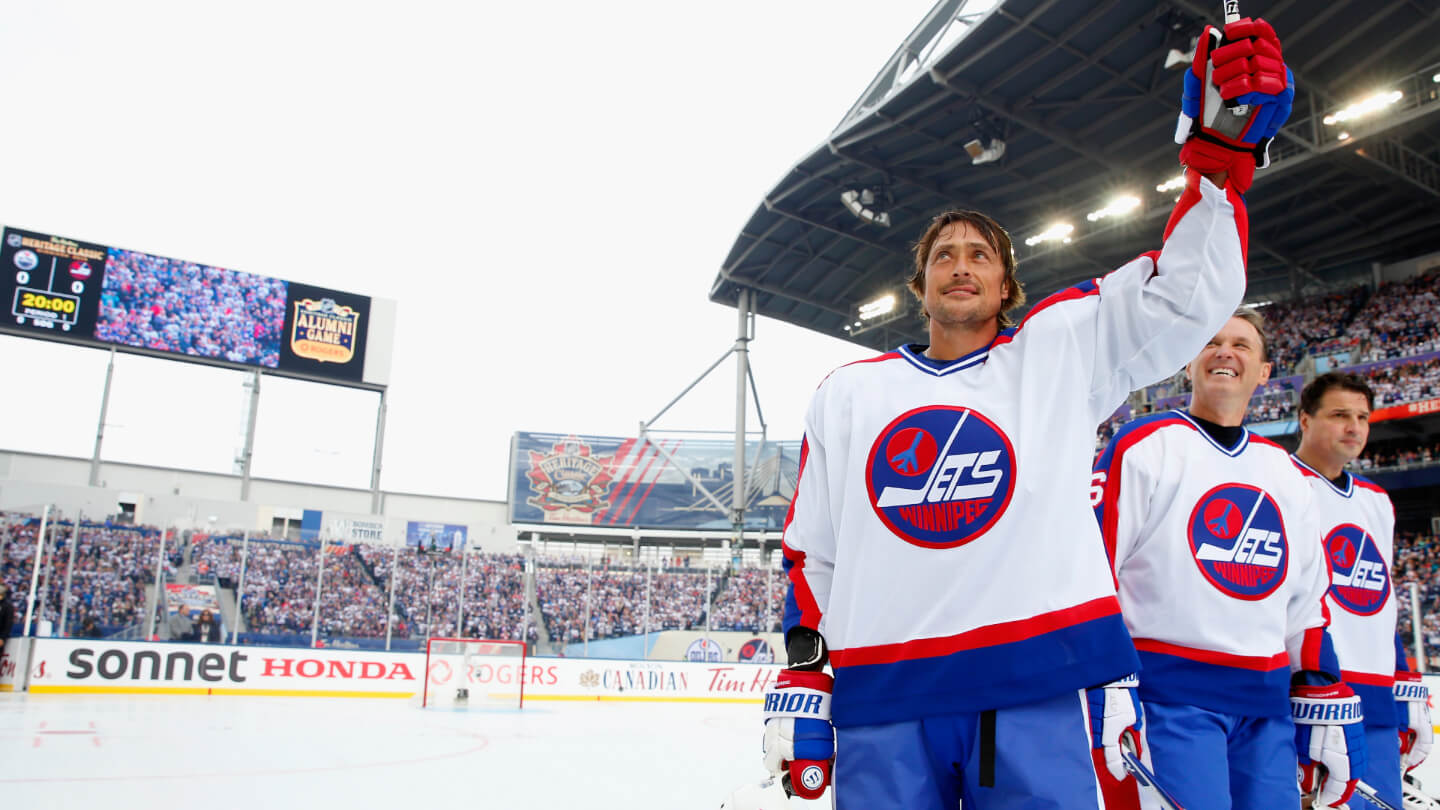Selanne certainly had the gregarious personality to match his outsized accomplishments on the ice. When he was playing for Jokerit, Selanne used to volunteer in a kindergarten class a couple times a week just to give himself something to do after practice. And while he was nobody’s definition of a rink rat, he certainly knew the value of discipline. As a kid, Selanne had a chin-up bar in his room and his dad, Ilmari, told him to do a few every time he walked in or out of the room. Fun always came after chores. When it was time to play, Selanne wired pucks past twin brother Paavo and he never stopped firing darts.
KING Teemu could beat anybody to a loose puck. He shot off the stride. He was like [708-goal man] Mike Gartner in a sense, where he knew where he wanted to shoot and the puck went there.
CAMPBELL He could be absolutely asleep in a given game, but you took your eyes off him or gave him some opening … he was so fast, it was just astounding.
ESSENSA He literally came into the dressing room a minute-and-a-half, two minutes before we were headed out there. He was the fastest changer, maybe in the history of the game. He did not spend any excess time in the locker room. He did everything fast. He loved fast cars.
KING Well, he didn’t practice hard, at least not as a young guy. I remember [defenceman] Dean Kennedy — who was a grumpy old bugger and one of my favorite teammates I ever had — would give it to him every single day before he got on the ice. And he was always the last guy on the ice because we’d be walking down the hallway with about three minutes [to go before practice] and he wouldn’t even have his equipment on, you know, he could dress so fast. But he’d always get out there on time and Dean would always say, “Teemu, you can’t be a pro if you’re never on time.” When he got on the ice, he just kind of had fun. That was Teemu.
PADDOCK He was no quiet superstar. He was just developing into a superstar, but he was exuberant. He would sign autographs all day if he could. It was a personality that’s contagious and who wouldn’t like that?
CAMPBELL The problem with Teemu was he was so accommodating. He’d sign every autograph, he’d do most every interview. They tried to herd him and shepherd him around and manage his time, but he would never say no to anybody.
ESSENSA He sat beside me in the locker room, and this is long before the league had guys like myself [a goalie coach for the Boston Bruins now] who overanalyze opposition goaltenders. He’d be putting his gear on, you know, frantic-mode a minute or so before we head out. More often than not [he’d ask] “Who are we playing tonight goalie-wise? Where do I shoot on him?” Not that he always listened, but he was obviously very coachable.
KING Once the game started, it was almost like there was a switch. He was all business. As he started to get closer to the record — I don’t think he really cared too much about it, at least he didn’t let on he did — it was us as a team that started to kind of focus in on the fact that this was really just an absolutely incredible, incredible run.
SELANNE I didn’t read the papers, not in Winnipeg, not in Finland.





